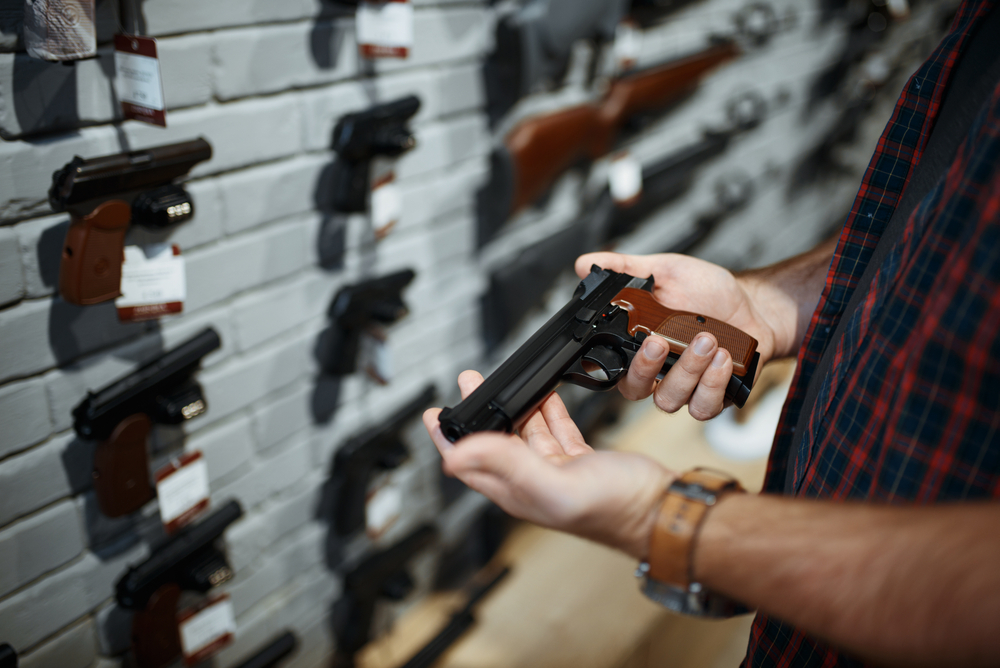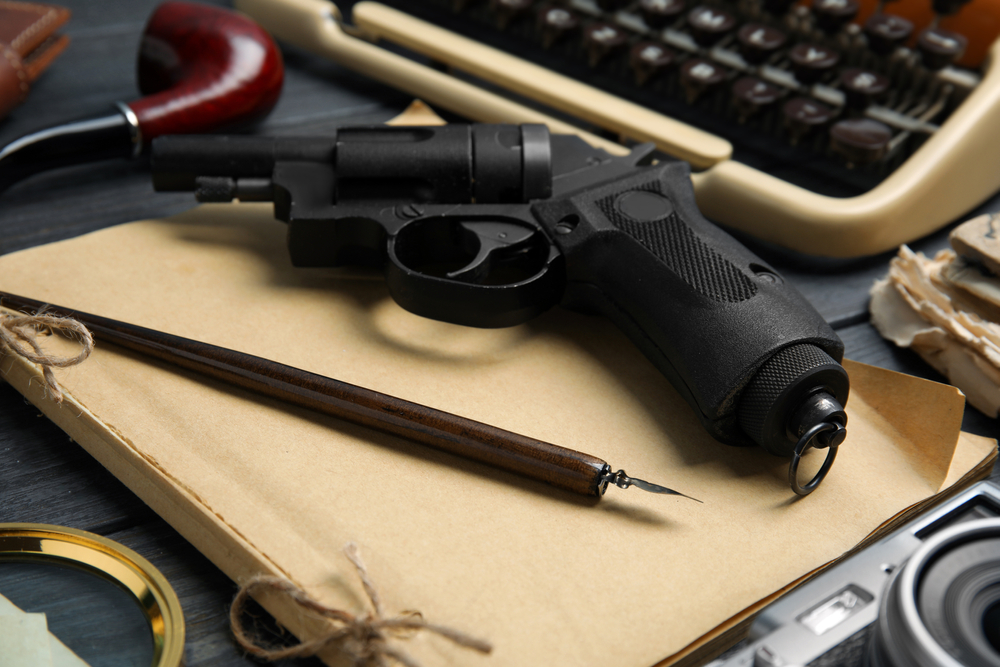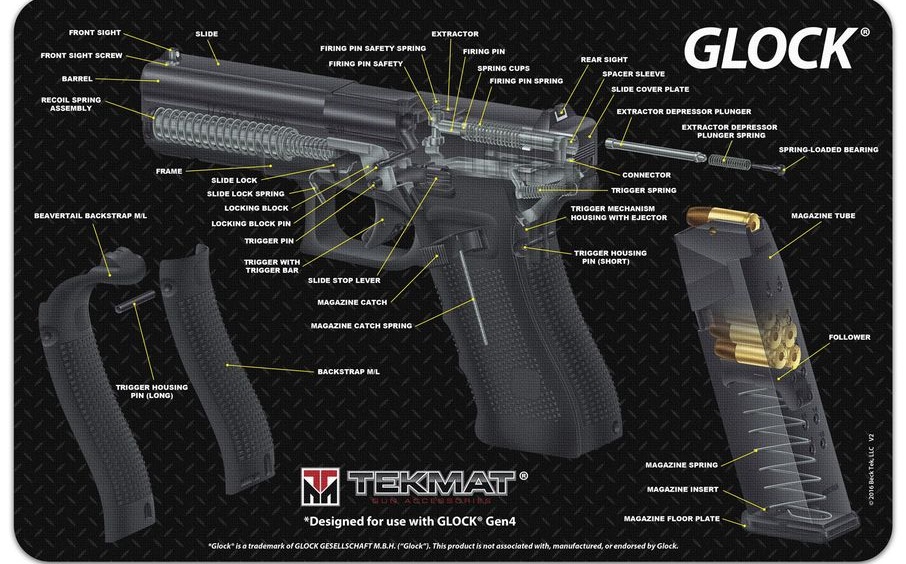Disabled or not, the best handgun for your needs is the one you can handle safely and have confidence in. Always get good training and practice as often as possible; this will give you the best results no matter which handgun you choose.
What determines the type of handgun you can handle safely?
- Whether it’s a revolver or a pistol.
- The caliber of the bullet.
The best handguns to start for a new shooter are .22 caliber revolvers because they have the least recoil. Suppose you have upper-body disabilities, such as low muscle strength, lack of arm strength, or limited control. In that case, you may be limited to a .22 caliber revolver firing .22 LR or .22 Magnum ammunition. These revolvers are suitable because of their light recoil and small size.
If you have good upper body strength and can fire the .22 caliber revolvers safely and with reasonable accuracy, you can progress to .357 Magnum revolvers shooting .38 Special ammunition. The .38 ammunition fits the .357 magnum cylinder and has less recoil. When you feel ready, move up to the 357 Magnum. Some disabled shooters may shoot the .44 magnum revolvers, but the heavy recoil can cause safety problems. In most cases, the added force of a .44 magnum is not worth the danger to yourself and others.
Start small
If you wish to carry a semi-automatic pistol, start with a .22 caliber pistol, proceed to the .32 caliber ACP, then .380 ACP, and finally the 9MM. Remember, as you go up in caliber, there will also be more felt recoil. Even though there are many advantages to this gun design, they will be of no use if you have a limp writing problem. If you can’t fire the pistol correctly, it can cause the fired brass to hang up in the gun, causing it to jam. Rather than have this problem, especially in a dangerous situation, it is best to use a revolver. Aside from that, the external safeties can be challenging to manage on a pistol. There is no safety to worry about with a revolver, and all of the ammunition and empty brass is located inside the cylinder until manually ejected.
Regardless of its type, shooting a gun is as much about what you do after pulling the trigger as what you do beforehand. When shooting in a self-defense scenario, it is entirely possible that you can fire a .40 caliber or a .45 ACP pistol. The problem is if the gun is too much for you to handle, there is a chance you may lose control of the firearm by dropping it or accidentally pulling the trigger again. This could cause serious safety risks to yourself and others.
Handgun Recommendations
If you haven’t done any shopping for a gun, or are confused by all the options, here are some guns you may want to start with. There are many others available that may also meet your needs.
Revolvers
- Ruger SP101 – This is a DA/SA 8 shot .22 LR caliber revolver, with a 4.20 inched barrel, made of stainless steel with wood and rubber grips. The trigger is very smooth and easy, and the recoil is very manageable. The front sight is fiber optic (which is suitable for low light conditions), the rear sight is adjustable.
- S&W 351PD .22 Magnum (J Frame) – This is a DA/SA .22 Magnum, with a 1.5-inch barrel and 7 round capacity. The front sight is orange fiber optic, and the rear sight is a fixed U notch. This revolver has a light recoil when fired. I recommend this revolver for individuals with weak hands and wrists that can’t shoot .38 Specials or .357 Magnums.
- Taurus model 85 – This is a 5 round DA/SA, 2-inch barrel, .38 Special +P revolver with comfortable rubber grips. It’s well balanced and very comfortable to shoot. Use speed loaders for faster reloading. This would be a good revolver for disabled individuals with recoil issues.
- Taurus Model 65 – This is a medium-framed 6 round, DA/SA, 4 inches barreled, matte blue steel, .357 Magnum/.38 Special revolver with rubber grips and fixed sights. This revolver is well balanced and very comfortable to shoot with low to medium felt recoil. Speedloaders will also help with this model to reload. This is a good revolver for disabled shooters with muscular upper body strength and no hand or wrist problems.
Semi-automatic Pistols
- Walther P22 – This DA/SA .22 Caliber pistol has a 3.4-inch barrel, adjustable sights, and adjustable grips. The magazine’s capacity is 10+1 rounds with a slide that is very easy to pull back. This pistol would be great for individuals with weak hands and wrists.
- Ruger Mark IV 22/45 Lite – This is a SA .22 Caliber pistol with a 4.40-inch barrel, magazine capacity of 10+1 rounds, and an aluminum receiver to reduce weight. Since all the controls are the same as a 1911 45 ACP, it makes for an excellent training pistol. The slide is easy to pull back, making it easier to use if you have weak hands and wrists.
- Kel-Tec P-32 – This is a double-action-only (5lbs. Smooth trigger pull), .32 ACP, with a 2.7-inch barrel, and 7+1 magazine capacity, and low profile fixed sights. This is a good pistol for shooters that are sensitive to recoil.
- Beretta Tomcat – This is a DA/SA stainless steel .32 ACP, with a 2.4-inch barrel and an ammunition capacity of 7+1 rounds. It’s ideal for disabled shooters that are recoil sensitive or have weak hands or wrists. You can load and unload this pistol by pushing down on the barrel release lever instead of working the slide.
- S&W Bodyguard with Crimson Trace laser sight – This is a DA only, polymer frame and grips, with a 2.75-inch stainless steel barrel and slide, .380 ACP pistol. Ammunition capacity is 6+1 rounds. The laser sights make it ideal for disabled shooters that can’t hold their arm out at full length to aim. To aim with the laser sights, just put the laser dot on the target and pull the trigger. It’s a good pistol to use for shooters that have trouble aiming or are sensitive to recoil. It is also very easy to conceal on the body.
- Walther PK380 – This is a DA/SA, polymer frame, 3.66-inch stainless steel barrel and slide, .380 ACP pistol. The ammunition capacity is 8+1 rounds. The slide is easy to pull back, making it easier to use if you have weak hands and wrists.
- Glock 19 Gen 4 ( 9MM) – This is a Striker fired pistol with a 5.5 lbs. trigger pull with the Safe Action feature. It has a 4.02-inch barrel length and fixed sights. The ammunition capacity is 15+1 rounds. The Gen 4 pistol comes with different sizes of interchangeable back straps. The recoil is light, the slide is smooth, and easy to pull back. This is a very dependable pistol and requires very little maintenance. This pistol will work for shooters with hand, wrist, or recoil problems.
- Springfield XD (9MM) 4-inch Barrel And Full-Size Frame – This is a striker-fired pistol with a 4-inch barrel, full-size frame, three-dot dovetail sights. It uses the Ultra Safety Assurance Trigger System. The grip safety and the firing pin block safety work together to prevent accidents. The ammunition capacity is 16+1 rounds, and the recoil is low. This is a very safe pistol for disabled shooters with recoil and slide operation issues.
For those individuals that want/need more firepower and can safely shoot and handle them. The following pistols may meet your needs:
- IWI Galil Ace SB Handgun in 7.62X39mm – This is a semi-auto handgun with an 8.3-inch barrel, front night sight, adjustable rear sight, and a full-length Picatinny top rail. There is also a manual thumb safety and an optional side-folding stabilizing arm brace (SBA3 adjustable brace by SB Tactical). This arm brace was specially designed for individuals with limited mobility to fire AR-15 pistols. This brace was modified to fit the Galil Ace SB Handguns. With this folding brace, the shooter can fire the handgun with or without the brace being extended depending on the shooter’s needs. With the brace in the folded position, the storage space is greatly minimized in a range bag or could be worn concealed. The arm brace makes it helpful to have good upper body strength but still have weakness in your hands or wrists. This weapon can use all standard AK-47 magazines (Check with your state and city laws on how many rounds can be loaded into a magazine).
- AR-15 Pistol – Palmetto State Armory (PSA) AR-15 Pistol in 5.56X45mm – This is a semi-auto handgun with a 7.5-inch barrel. The primary upper receiver comes with a full-length Picatinny top rail with fold-down sights. This gives you a choice to put any sighting system on that you want. The best brace to put on it is also the SBA3 adjustable brace by SB Tactical. This handgun is a pistol and, in most states, can be carried concealed with a CCW ( check with your state and local laws). This AR-15 pistol can use all AR-15 magazines (check with your state and local laws on a legal number of rounds per magazine) with the adjustable brace in its shortest length. It can be stored and carried in a briefcase, small range bag, or concealed on a single point sling.
- Century Arms Mini AK Pistol 7.62X39mm – This AK pistol has a 7.75-inch barrel, standard AK sights, and a stamped metal receiver. The gun uses all standard AK magazines (5,10,20, 30 round). A folding arm brace or a single point sling can be used to stabilize the pistol. It can be stored or carried in a briefcase, small range bag, or concealed on a single point sling.
- Draco NAK9 Pistol – This is a 9mm semi-auto blowback pistol with an 11.14-inch barrel and built on the AK platform. It uses all Glock 9mm magazines from the 10 round to the 33 rounders. A folding arm brace or a single point sling can be used to stabilize the pistol. It can be stored or carried in a briefcase, small range bag, or concealed on a single point sling.
Just because you are disabled doesn’t mean you can’t be trained to shoot a handgun for self-defense safely. In these times, owning a gun and using it to defend yourself and others is an absolute necessity. Do not be intimidated or fooled into believing that you should be unarmed or limited in the kinds of guns you can legally own and operate. Take the time now to learn how to shoot or rebuild existing skills. Also, remember to vote and make gun rights your litmus test.







































































